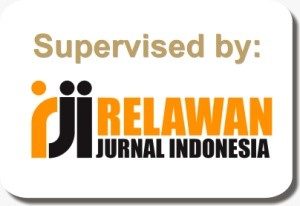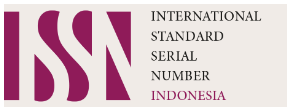Demonstration of Code-Mixing in Kasih Aba-Aba by Naykilla, Tenxi, and Jemsii
Abstract
This study aims to examine the phenomenon of code-mixing in the Indonesian pop song 'Kasih Aba-aba' by Naykila, Tenxi, and Jemsii, with a focus on the structural types and linguistic purposes of code-mixing in the lyrics. Employing a qualitative descriptive method and a content analysis approach, this research utilized a purposive sampling strategy to select this specific song as a rich case study due to its prevalent use of English-Indonesian code-mixing and its popularity on digital platforms. Line-by-line analysis of the lyrics was part of the research process, and each instance of code-mixing was categorized using Muysken's (2000) typology of insertion, alternation, and congruent lexicalization and its functions were interpreted using sociolinguistic frameworks (Gumperz, 1982; Hoffman, 1991; Poplack, 1980). Findings indicate that insertion is the most common kind of code mixing, followed by alternation and congruent lexicalization. These are employed to accomplish a variety of sociolinguistic goals, including emphasis, identity expression, prestige, and emotional personalization. English elements used for stylistic purposes represent global influence, young identity, and multilingual proficiency. The purposeful use of Bahasa Indonesia and English enhances the emotional tone of the lyrics and aligns with current linguistic trends in Indonesian youth culture. The results indicate that code-mixing in popular music acts as both a communicative and cultural strategy. This research adds to our knowledge of bilingual language usage in media discourse and has practical implications for discourse-based English training and the development of culturally relevant language curricula. The limitation of the study is that study only focuses on a single song, which limits generalizability. Therefore, future research is recommended to expand into cross-artist comparisons and to investigate audience reception.
References
Alrajafi, G. (2021). The Use of English in Indonesia: Status and Influence. SIGEH ELT Journal of Literature and Linguistics 1(1). http://dx.doi.org/10.36269/sigeh.v1i1.355
Bhasmanara, W., Ratminingsih, & N. M., Sari, R. A. (2025). THE CODE-SWITCHING ANALYSIS ON INDONESIAN BOY BAND AND GIRL BAND SONGS [Journal-article]. Lingua Scientia, 32(1), 1–11. https://ejournal.undiksha.ac.id/index.php/JJBI/article/download/91114/33103/286998
Creswell, J.W. (2014). Educational Research: Planning, Conducting, and Evaluating Quantitative and Qualitative Research, 5th Edition. Pearson
Diveica, V., Pexman, P. M., & Binney, R. J. (2022). Quantifying social semantics: An inclusive definition of socialness and ratings for 8388 English words. Behavior Research Methods, 55(2), 461–473. https://doi.org/10.3758/s13428-022-01810-x
Dola, H., & Afnita, A. (2025). Analisis Campur Kode ke Luar (Outer Code Mixing) pada Lagu “Everybody Knew” Ciptaan Citra Scholastika. AHKAM. https://doi.org/10.58578/ahkam.v4i2.5550.
Gumperz, J. J. (1982). Discourse Strategies. Cambridge: Cambridge University Press.
Fahlefi, I., Novitri, N., & Harfal, Z. (2024). An Analysis of Code Mixing Used by Maudy Ayunda on Her Youtube Channel. JIIP - Jurnal Ilmiah Ilmu Pendidikan. https://doi.org/10.54371/jiip.v7i11.6226.
Filipi, A. (2019). Language Alternation as an Interactional Practice in the Foreign Language Classroom. Multilingual Education Yearbook 2019. https://doi.org/10.1007/978-3-030-14386-2_2 .
Hiswara, A., Mohammad Aziz, A., Pujowati, Y., Ade, N. :, & Sari, R. (2023). Cultural Preservation in a Globalized World: Strategies for Sustaining Heritage. In West Science Social and Humanities Studies 1(3). http://dx.doi.org/10.58812/wsshs.v1i03.250
Hoffman, C. (1991). An Introduction to Bilingualism. London: Longman.
Holmes, J. (2013). An Introduction to Sociolinguistics. In Language 70(3).
Kadir, R. (2021). Code-Switching In Indonesian Popular Songs and The Implications for English Language Teaching. JOALL (Journal of Applied Linguistics and Literature), 6(1), 109–132. https://doi.org/10.33369/joall.v6i1.13314
Kandiawan, A. B. (2022). Code-Switching And Slang Used By Gen Z Indonesians On Social Media. Eltr Journal, 7(1), 48–56. https://doi.org/10.37147/eltr.v7i1.165. https://doi.org/10.2307/416511
Larassati, D., & Suyudi, I. (2021). English-Indonesian Code Mixing Found In The Summer Triangle Novel By Hara Hope. Journal of Language and Literature. https://doi.org/10.35760/jll.2021.v9i2.5278.
Levinia. E & Najla A. (2022). Analisis Penggunaan Campur Code (Code Mixing) dalam Lagu “Kis Band.” Jurnal Pendidikan, Bahasa Dan Budaya, 1(1), 15–21. https://doi.org/10.55606/jpbb.v1i1.685
Mulyati, S., Astuti, P., Arianti, A., & Noviana, A. (2021). Code Mixing Strategies in BLACKPINK’s Album. ASELS_2021. https://doi.org/10.51773/asels2021.v1i1.46.
Muysken, P. (2000). Bilingual Speech: A Typology of Code-Mixing. Cambridge University Press.
Nabila, C., & Idayani, A. (2022). An Analysis of Indonesian-English Code Mixing Used in Social Media (Twitter). J-SHMIC : Journal of English for Academic, 9(1), 1–12. https://doi.org/10.25299/jshmic.2022.vol9(1).9036
Nazak, A., Fhitri, W., Antaridha, R., Maiza, T., & Shabri, I. (2023). An Analysis of Code-Mixing in Bunga Citra Lestari’s Love Story #1 – BCL Sebelum & Sesudah Ashraf. Jurnal Penelitian Dan Pengkajian Ilmiah Sosial Budaya. https://doi.org/10.47233/jppisb.v2i1.773.
Nugraha, I., Jaelani, A., & Sukma, B. P. (2024). How Indonesian Students View Code-Mixing in Daily Conversations. Journal of English Language Studies, 6(2). https://doi.org/https://doi.org/10.55215/jetli.v6i2.10407
Nurhaidal, I., Gustina Zainal, A., Setyowati, P., & Firdaus, F. (2022). The Influence of Social Media on Language Trends South Jakarta Children as the Use of Language Day to Day. International Journal of Social Science and Education Research Studies, 2(11). https://doi.org/10.55677/ijssers/V02I11Y2022-04
Picone, M. (2024). Lyrical Code-Switching, Multimodal Intertextuality, and Identity in Popular Music. Languages. https://doi.org/10.3390/languages9110349.
Poplack, S. (1980). Sometimes I'll Start a Sentence in Spanish Y Termino en Español. Linguistics, 18(7-8), 581-618.
Sakul R. B. G. & Lumoindong B. (2024). Junior High School Students Experiences On English-Indonesia Bilingualism: A Phenomenology Study. AL-MIKRAJ Jurnal Studi Islam Dan Humaniora, 4(02), 770–782. https://doi.org/10.37680/almikraj.v4i02.4913
Solano, R. (2023). Phraseological Units In English: Variation Through Lexical Insertion. Scientific Work. https://doi.org/10.36719/2663-4619/93/18-22.
Souad, Dr. M., & Ramdane, Dr. T. (2019). Learning English in the 21st Century: For Globalization or Westernization? International Journal of Humanities and Social Science, 9(6). https://doi.org/10.30845/ijhss.v9n6p20
Susilawati, E., & Andriani, D. (2023). Code-Switching And Code-Mixing Analysis In Indonesian Songs Lyrics By Un1ty. JournalBASIS., 10(1). https://doi.org/10.33884/basisupb.v10i1.6882
Suwiyah, S., & Kholis, A. (2024). Code Mixing in the Lyrics of the Song “You Never Know” by Blackpink. JLA (Jurnal Lingua Applicata). https://doi.org/10.22146/jla.88767.
Temperley, D. (2022). Music and Language. Annual Review of Linguistics. https://doi.org/10.1146/annurev-linguistics-031220-121126.
Ulhaq, B. (2025). Eksplorasi Campur Kode dalam Lirik Lagu “Now I Know” yang Dipopulerkan Oleh Kaleb J. Sintaksis : Publikasi Para ahli Bahasa dan Sastra Inggris. https://doi.org/10.61132/sintaksis.v3i1.1365.
Usmanova, S. (2023). CODE MIXING IN DISCOURSE. International Journal of Advance Scientific Research. https://doi.org/10.37547/ijasr-03-06-29.
Vionita, V., Shabri, I., Yanti, R., & Yalmiadi, Y. (2023). An analysis of Types and Forms of Code-Mixing in Indonesian Song Lyric by Saykoji. Jurnal Penelitian Dan Pengkajian Ilmiah Sosial Budaya, 2(2), 140–147. https://doi.org/10.47233/jppisb.v2i1.770
Yannuar, N., Priambarini, A., Widodo, H., & Febrianti, Y. (2023). African-American Vernacular English as Hip-Hop Artist Identity in Indonesian Rapper Ramengvrl's Songs. KnE Social Sciences. https://doi.org/10.18502/kss.v8i7.13231.

This work is licensed under a Creative Commons Attribution-ShareAlike 4.0 International License.
Authors retain copyright and grant the journal right of first publication with the work simultaneously licensed under a Creative Commons Attribution-ShareAlike 4.0 International License (CC BY-SA 4.0) that allows others to share the work with an acknowledgment of the work's authorship and initial publication in this journal.
Authors are able to enter into separate, additional contractual arrangements for the non-exclusive distribution of the journal's published version of the work (e.g., post it to an institutional repository or publish it in a book), with an acknowledgment of its initial publication in this journal.
Authors are permitted and encouraged to post their work online (e.g., in institutional repositories or on their website) prior to and during the submission process, as it can lead to productive exchanges, as well as earlier and greater citation of published work (See The Effect of Open Access).





